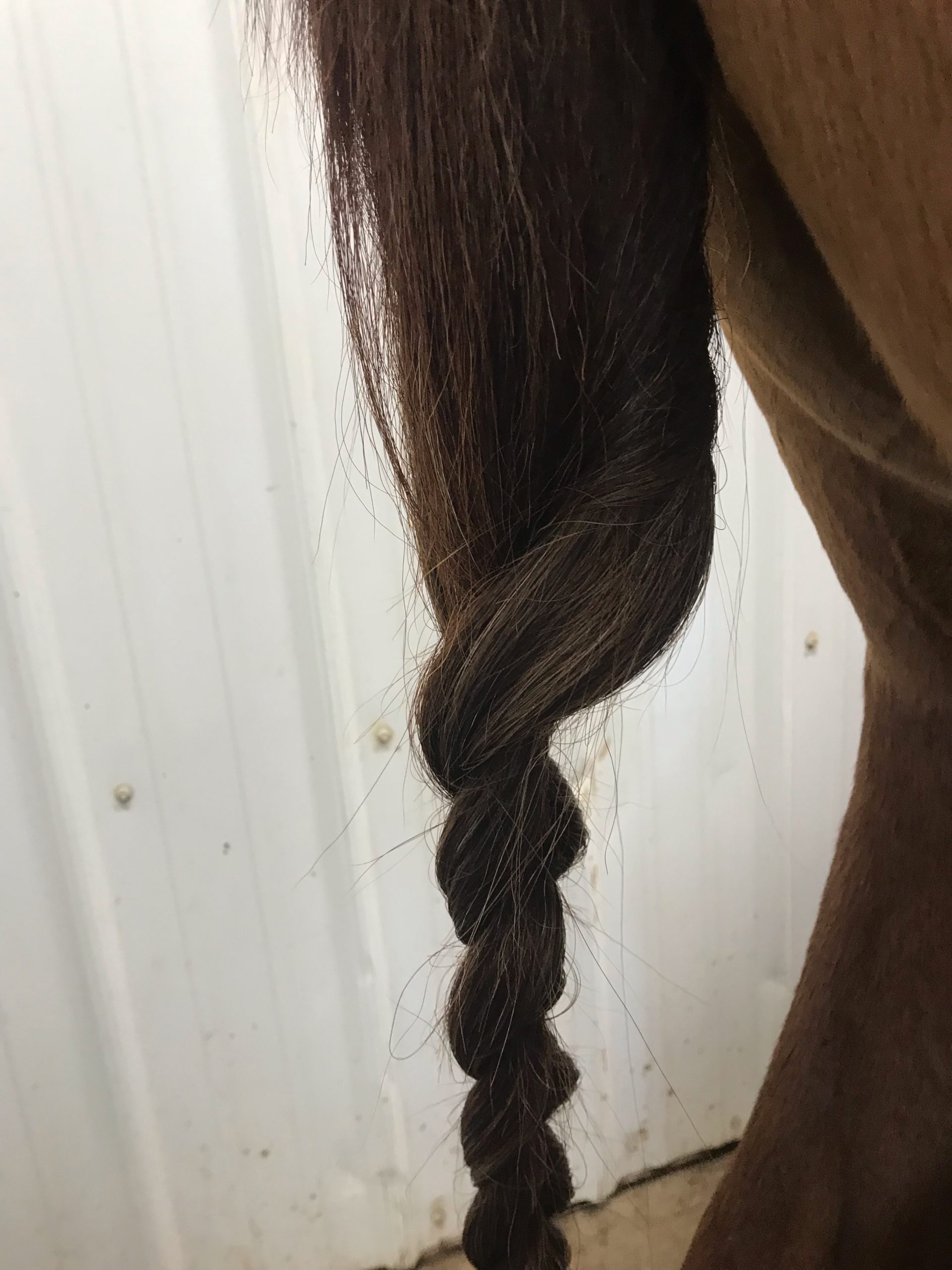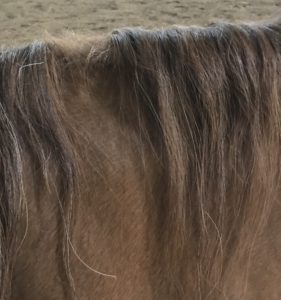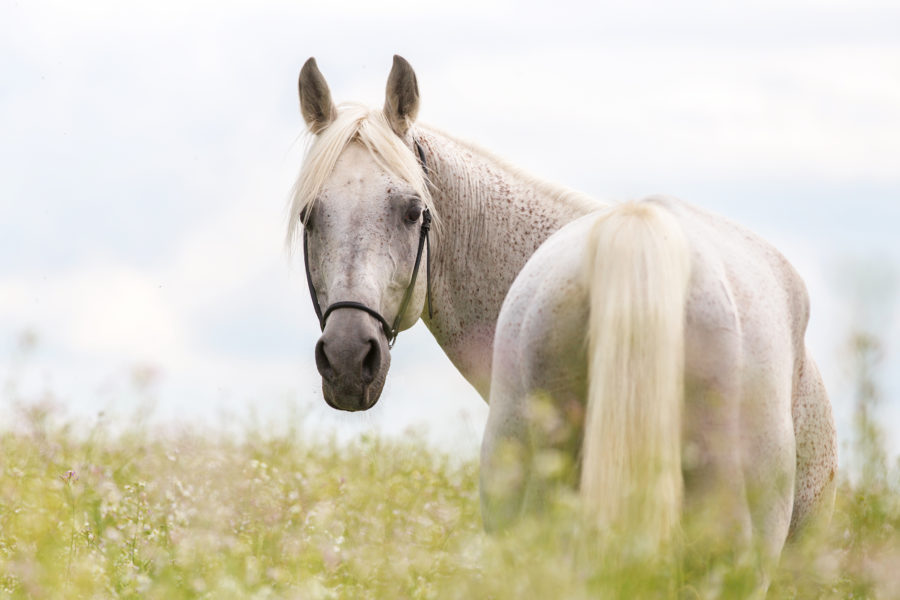Tips on taking her mane and tail from mediocre to marvelous!
The sight of a shiny flowing mane and tail is sure to capture the attention of any equine lover. With some diligence and knowledge of nutrition, environment, care and genetics, you’ll be able to maintain your own horse’s lustrous locks, or succeed in growing the mane and tail of your dreams.
Healthy horse = healthy hair
No quantity of product potions will improve your horse’s hair condition if he’s not receiving proper nutrition. By feeding him a quality diet that meets his nutritional requirements, you’ll naturally enhance his mane and tail. Like hooves, hair needs a certain balance of nutrients in order to flourish. Certain supplements are designed to support both these structures, and include the B vitamin biotin, the essential amino acids lysine and methionine, and the trace minerals zinc, copper and iodine.
Take a look

Inspect your horse’s living spaces for potential mane, tail and forelock hazards that could cause her hair to become caught and torn out. A lot of hair damage can be done by a loose or splintered board, broken wire and fencing, metal hardware like hinges, latches and gates, protruding nails or screws, torn buckets and feed tubs, and even trees and bushes. A little preventative maintenance in the area your horse is spending her time in will help you avoid major mane and tail misery.
Stop the itch
That frizzy ratted mess of broken hair at your horse’s dock or mane base is a clear sign she’s itchy. Horses will find a way to self-soothe and scratch the itch by rubbing, causing hair and skin damage in a very short time. Inspect your horse’s underbelly, sheath or udder area, and the fold of skin between the hind legs up to the anus – these are all areas that can cause tail rubbing when not kept clean and moisturized. Next, help her fend off annoying biting flies with a wide-coverage fly spray applied liberally and often.
If her itching persists, there are topical treatments you can try. But if you can’t identify the root of the problem, you’ll need to consult your veterinarian.

Become wash wise
Never use dish or laundry soap or any harsh cleaning products that aren’t designed for skin or hair. Bathe your horse often enough to keep his hair from becoming filthy, at which point it will just tangle into knots and break off. Make sure you rinse the suds from top to bottom, and devote most of your time to rinsing the tail bone and mane scalp. Using a conditioner and finishing up with a detangling product will leave your horse’s mane and tail moisturized and silky, and less prone to knots.
Ban the brush
Many equestrians outlaw any type of combing until their horse’s hair is dry from a conditioned wash and glossy with a detangling spray. This is an excellent practice to uphold. Between washes, use your fingers to sort out any tangles and free the hair of any debris. If you have a knotted mess on your hands, apply a detangler product directly on the matted hair, massage it in slowly, and lightly use your fingers to unravel the hair. Be patient and allow yourself plenty of time to tackle tangles. Rushing will cause severe damage that takes months – even years – for your horse to regrow.
When you do reach for the brush, begin at the bottom of the tail and brush upwards, holding the hair tightly where you are brushing to prevent pulling.

Find aid in a braid
Braids are a great way to prevent tangles and snags, but it’s important to be braid your horse’s hair safely and correctly. Start braiding below the tail bone so you don’t risk cutting off blood circulation. If you stay low and loose, you won’t have issues.
Braiding your horse’s tail, inserting it in a tail bag, and tying the fabric straps below the tail bone is an easy way to keep her hair protected and free of manure and dirt. Re-do the tail bag every two months to re-wash and condition the hair and evaluate progress.
Many horses will rub out uncomfortably tight mane braids. Keep the first four or five crosses in each braid looser so it stretches as your horse moves her neck. Continue crossing the sections of the braid, applying downward pressure to tighten each crossover for a clean neat braid. Use a hair-friendly elastic to close the braids.

Get the fit
A poorly-fitting blanket will cause friction on your horse’s withers, neck and mane as she moves. A loose or tight fit will rub manes off in noticeable spots and cause inches of hair loss. The only way to recover from this is to trim the full mane to the length of the damage and restart the growing process. This is a painful setback that can be prevented simply by knowing your horse’s correct measurements.
In some cases, horses with the ability to grow long beautiful manes and tails just naturally “have it”. You can’t change your horse’s DNA, but you can ensure safe environments, take control over nutrition, add supplements that assist in hair growth, and use skill and care to support and encourage the best mane and tail she’s capable of growing.








